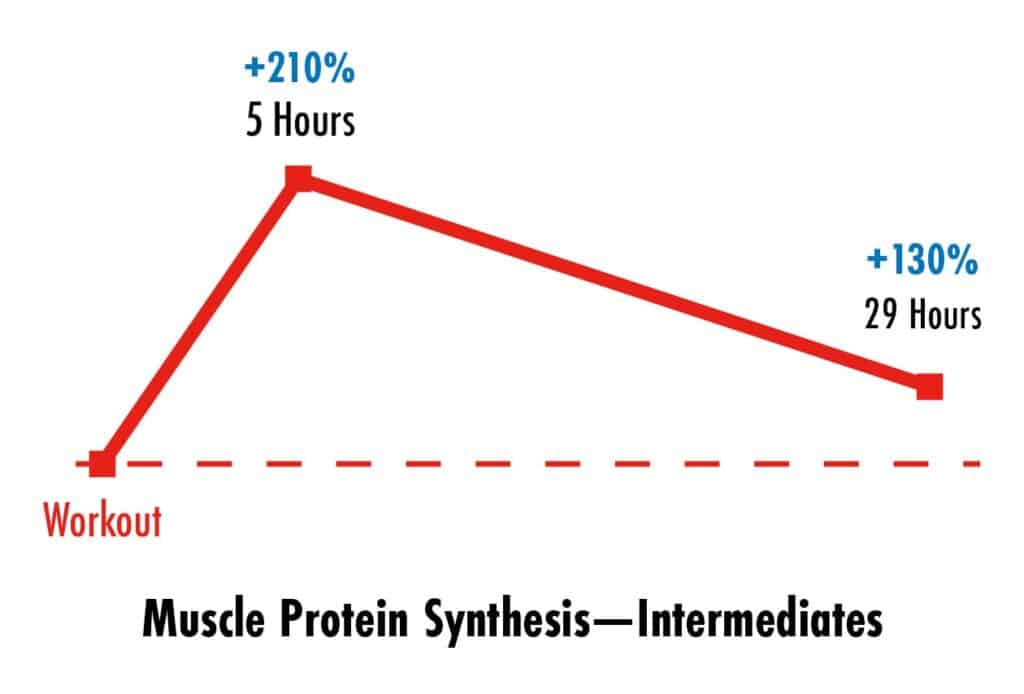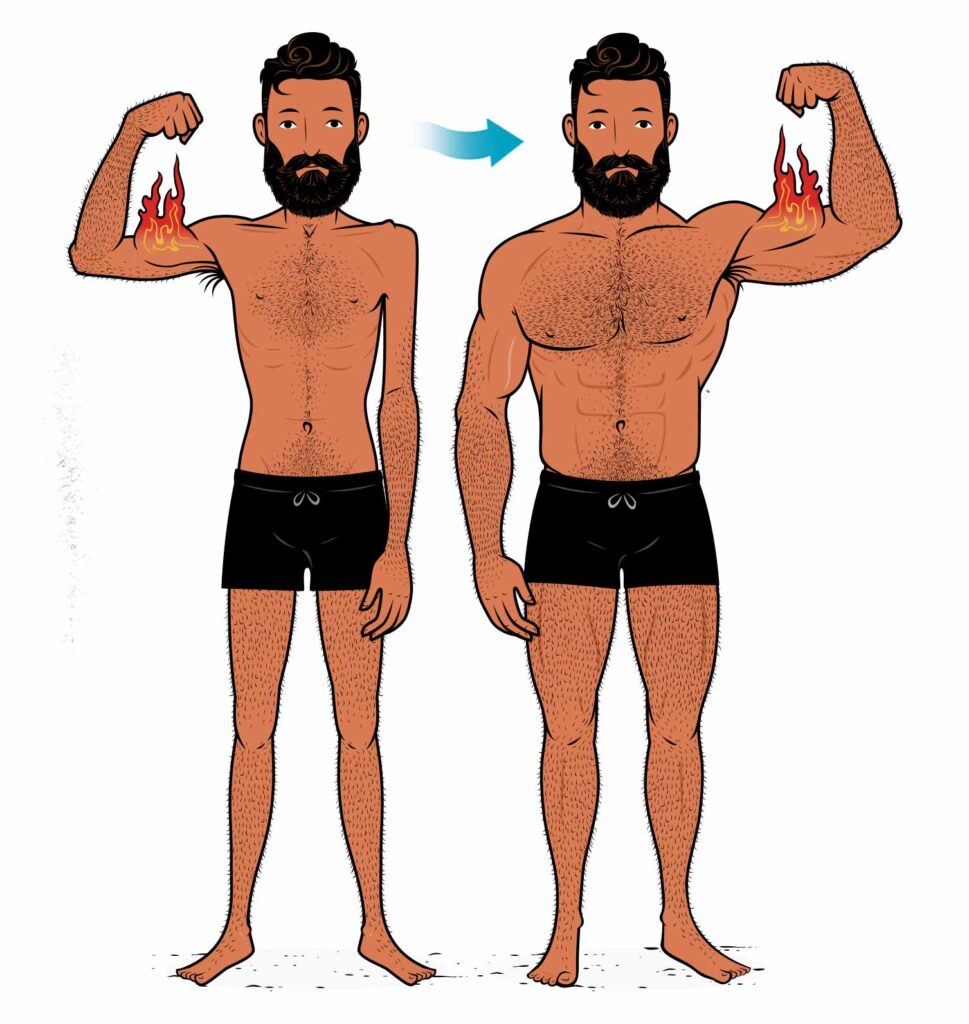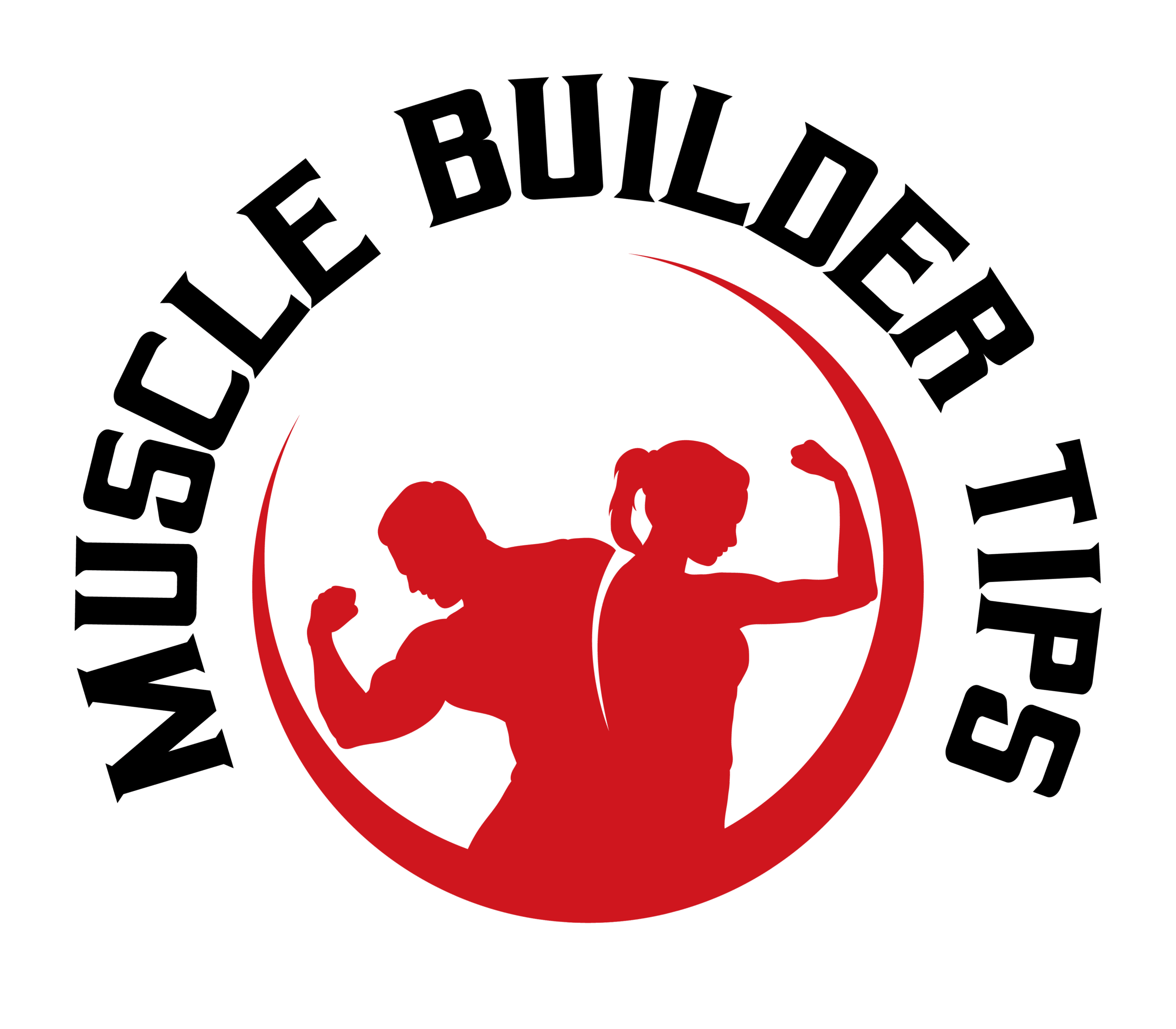
Have you ever wondered how long it takes to build muscle after a workout? It’s a common question among those who are trying to get fit and improve their strength. Well, I’m here to tell you that it’s not an easy question to answer with a one-size-fits-all response. The time it takes to build muscle after a workout can vary depending on several factors such as your genetics, diet, exercise routine, and how consistent you are with your training. But don’t worry, I’ll dive deeper into the topic and give you more details in the article.
Building muscle after a workout is a process that requires time and patience. It’s not something that happens overnight, so it’s important to set realistic expectations. Generally, most people can start to see some noticeable improvements in their muscle mass after several weeks of consistent training. However, the actual time it takes to build significant muscle varies from person to person. Some individuals may see faster results due to their genetics or other factors, while others may take longer to see progress. In the article, we’ll explore some strategies you can use to optimize muscle growth and speed up the process. So, keep reading to learn more!
Factors Affecting Muscle Building Process
Genetics
When it comes to building muscle after a workout, your genetics play a significant role. Some individuals are naturally predisposed to gain muscle mass more easily than others. This is due to variations in muscle fiber composition, testosterone levels, and other genetic factors. While genetics may influence your muscle-building potential, it’s important to remember that hard work and determination can still lead to significant muscle growth.
Diet and Nutrition
The food you eat plays a crucial role in the muscle-building process. To optimize your muscle growth, you need to consume a balanced diet rich in protein, carbohydrates, and healthy fats. Protein is especially important as it provides the building blocks necessary for muscle repair and growth. Aim to consume around 1.2-2 grams of protein per kilogram of body weight daily. Additionally, make sure to fuel your body with the right amount of calories to support muscle development.
Exercise Type
The type of exercise you engage in can also impact how long it takes to build muscle after a workout. Resistance training, such as weightlifting, is particularly effective in stimulating muscle growth. By lifting weights or engaging in other forms of resistance exercises, you create micro tears in your muscle fibers. These tears are then repaired during the recovery process, leading to muscle growth over time.
Training Intensity
The intensity of your workouts plays a crucial role in muscle building. To promote muscle growth, you need to challenge your muscles with progressively heavier weights or increased resistance. This concept is known as progressive overload and it ensures that your muscles are constantly adapting and growing. Aim to gradually increase the intensity of your workouts to continue stimulating muscle growth.
Recovery Time
Recovery is a critical component of muscle building. When you work out, you create small tears in your muscles. It is during the recovery period that these tears are repaired and the muscles grow stronger. Adequate rest and recovery time allows your muscles to rejuvenate and adapt to the stress placed upon them during exercise. Ensure you give yourself enough time between workouts to allow for proper recovery.
Immediate Effects of a Workout
Muscle Fatigue
After a rigorous workout, you may experience muscle fatigue. This feeling of tiredness or weakness in your muscles is a result of the intense physical exertion. During exercise, your muscles consume energy stored in the form of ATP (adenosine triphosphate). When the ATP stores become depleted, muscle fatigue sets in.
Micro Tears in Muscle Fibers
Intense workouts can cause microscopic tears in your muscle fibers. These tears are a normal part of the muscle building process and are essential for growth. When the body repairs these tears, it adds more muscle fibers to increase the overall muscle mass. This repair process is what contributes to muscle growth and strength gains.
Increased Blood Flow
During exercise, blood flow to your muscles increases. This is due to the increased demand for oxygen and nutrients to fuel the working muscles. The increased blood flow helps deliver essential nutrients and oxygen to the muscles, aiding in the repair and growth process.

This image is property of outlift.com.
Post-Workout Recovery
Muscle Repair
After a workout, your muscles enter a repair phase where the damage caused during exercise is repaired. This repair process is essential for muscle growth and strength development. During this phase, your body synthesizes new proteins to rebuild and strengthen the damaged muscle fibers.
Protein Synthesis
Protein synthesis is a key component of post-workout recovery. It is the process by which individual amino acids are linked together to form new muscle proteins. Consuming an adequate amount of protein after a workout is essential to promote protein synthesis and stimulate muscle growth. Aim to consume a protein-rich meal or snack within two hours of completing your workout.
Inflammation and Swelling
After an intense workout, you may experience some inflammation and swelling in your muscles. This is a normal response to the stress placed on the muscles during exercise. The inflammation triggers the release of certain growth factors that promote muscle repair and growth. However, excessive inflammation can hinder the recovery process, so it’s important to strike a balance.
Fluid and Electrolyte Balance
Exercise can cause fluid and electrolyte imbalances within your body. Sweating during workouts leads to the loss of fluids and electrolytes, such as sodium, potassium, and magnesium. Restoring fluid and electrolyte balance through proper hydration and consuming electrolyte-rich foods or drinks is important for efficient muscle recovery.
Timing for Muscle Growth
Anabolic Window
The concept of an anabolic window suggests that there is a specific time frame after a workout in which nutrient intake is crucial for maximizing muscle growth. This window is typically believed to be within 30 minutes to one hour post-workout. During this time, your muscles are more receptive to nutrients, especially protein, which aids in muscle repair and growth. While the anabolic window is still debated among experts, it is generally recommended to consume a protein-rich meal or snack shortly after your workout.
Overnight Muscle Growth
Muscle growth doesn’t only occur during your workout but also while you’re asleep. During sleep, your body undergoes a process known as muscle protein synthesis, where protein molecules are created to repair and rebuild muscle fibers. Getting enough quality sleep is essential for optimal muscle growth and recovery.
Muscle Growth during Rest Days
Rest days are just as important as workout days when it comes to building muscle. It is during these rest days that your muscles have time to repair and rebuild themselves. Engaging in light activities or low-intensity exercises on rest days can also aid in muscle recovery and growth.

This image is property of outlift.com.
Natural Muscle-Building Process
Muscle Hypertrophy
Muscle hypertrophy refers to the increase in muscle size. It occurs when the muscle fibers are exposed to repeated bouts of resistance training, leading to an increase in their cross-sectional area. This increase in muscle size is a result of both an increase in the individual muscle fiber size (known as fiber hypertrophy) and an increase in the number of muscle fibers (known as fiber hyperplasia).
Muscle Hyperplasia
Muscle hyperplasia is the increase in the number of muscle fibers. While hypertrophy primarily occurs through an increase in the size of existing muscle fibers, hyperplasia refers to the actual increase in the number of muscle cells. While hyperplasia is more commonly observed in certain animal species, it may also occur to a lesser extent in humans.
Adaptations in Muscle Fibers
The repeated stress placed on your muscles during resistance training leads to adaptations in muscle fibers. These adaptations include an increase in the number and size of contractile proteins within the muscle fibers, as well as an improvement in the interplay between nerve and muscle. These adaptations result in the muscles becoming stronger, more efficient, and better able to withstand the demands of future workouts.
Duration to Notice Muscle Growth
Short-Term Muscle Pumps
After a workout, you may notice a temporary increase in muscle size known as a muscle pump. This occurs due to increased blood flow to the muscles, causing them to appear fuller and more engorged. However, this temporary pump is not indicative of long-term muscle growth.
Strength Gains
Strength gains are often one of the first signs of muscle growth. As your muscles adapt to resistance training, you will notice an increase in your ability to lift heavier weights or perform more repetitions. Strength gains indicate that your muscles are getting stronger and are on their way to further growth and development.
Visible Changes
Visible changes in muscle size and definition are typically noticeable after several weeks or months of consistent resistance training and proper nutrition. These changes may include increased muscle size and improved muscle definition, particularly in areas targeted during your workouts.
Performance Improvements
Performance improvements, such as increased endurance, speed, or power, may also indicate muscle growth. As you build muscle, your overall physical performance will likely improve over time. This could involve running faster, lifting heavier weights, or having better overall athletic abilities.

This image is property of i0.wp.com.
Timeline for Muscle Development
Beginner Stage
For beginners who are new to resistance training, noticeable muscle growth typically occurs within the first few weeks to a couple of months of consistent training. During this stage, your body undergoes significant adaptations to the new stimuli, resulting in initial strength gains and some visible muscle growth.
Intermediate Stage
During the intermediate stage, which usually occurs after several months to a year of consistent training, muscle growth becomes more pronounced. Your muscles continue to adapt and grow, leading to more significant changes in muscle size, strength, and overall physique.
Advanced Stage
The advanced stage is typically reached after years of consistent and focused training. At this stage, muscle growth may slow down, and gains may become more difficult to achieve. However, with proper training techniques, nutrition, and dedication, further muscle development is still possible.
Factors That Influence Muscle Building Speed
Training Consistency
Consistency is key when it comes to building muscle. Regularly engaging in resistance training and maintaining a consistent workout routine is essential for optimal muscle growth. Aim to train each muscle group at least two to three times per week for best results.
Protein Intake
Protein is essential for muscle growth as it provides the necessary amino acids. Consuming an adequate amount of protein, especially in the post-workout period, is crucial for maximizing muscle protein synthesis. Aim to include good sources of protein such as lean meats, fish, poultry, dairy, eggs, legumes, and plant-based protein sources in your diet.
Hormonal Balance
Hormones, particularly testosterone, play a crucial role in muscle growth. However, hormonal balance can vary among individuals. Factors such as age, sex, and overall health can influence your hormone levels. While you can’t control all aspects of your hormonal profile, maintaining a healthy lifestyle and optimizing your nutrition can positively impact hormone levels and support muscle growth.
Age and Fitness Level
Both age and fitness level can influence the speed of muscle building. As you age, your body’s ability to build and maintain muscle may naturally decline. However, regular resistance training and proper nutrition can help offset age-related muscle loss. Additionally, individuals with a higher level of fitness and muscle mass may experience slower muscle growth compared to beginners.
Recovery and Sleep
Adequate recovery and quality sleep are crucial for muscle growth. During sleep, your body undergoes important processes that promote muscle repair and growth. Aim to get seven to nine hours of quality sleep each night and prioritize rest and recovery days between workouts to ensure optimal muscle development.

This image is property of www.setforset.com.
Best Practices for Efficient Muscle Building
Balanced Workout Routine
A balanced workout routine that includes a variety of exercises targeting different muscle groups is important for overall muscle development. Incorporate resistance training exercises that target major muscle groups, such as squats, deadlifts, bench presses, rows, and shoulder presses. Aim for a mix of compound exercises (involving multiple muscle groups) and isolation exercises (targeting specific muscles).
Adequate Rest and Recovery
As mentioned before, rest and recovery are crucial for muscle growth. Allow your muscles at least 48 hours of rest before working them again. A balance between training and recovery is necessary to prevent overtraining, which can hinder muscle growth.
Progressive Overload
Progressive overload is the gradual increase in the demands placed on your muscles. It involves constantly challenging your muscles by increasing the weight lifted or the resistance used. Elicit muscle growth by progressively increasing the difficulty of your workouts over time.
Healthy and Sufficient Nutrition
To support muscle growth, you need to fuel your body with the right nutrients. Consume a well-balanced diet that includes an adequate amount of protein, carbohydrates, and healthy fats. Additionally, stay hydrated and consider incorporating supplements, such as protein powders or branched-chain amino acids, if necessary.
Tracking and Measuring Progress
Tracking your progress is essential for monitoring muscle growth. Keep a record of your workouts, including the exercises performed, weights used, and repetitions completed. Regularly assess and adjust your training and nutrition strategies based on your progress to continue achieving optimal results.
Conclusion
Building muscle after a workout is a complex process that is influenced by various factors. While the timeline for noticeable muscle growth may vary among individuals, consistency, proper nutrition, and adequate recovery are essential for maximizing muscle development. Remember, your genetic makeup, age, fitness level, and other factors will impact your muscle-building journey. Stay dedicated, follow best practices, and give yourself time to see the results of your hard work.
